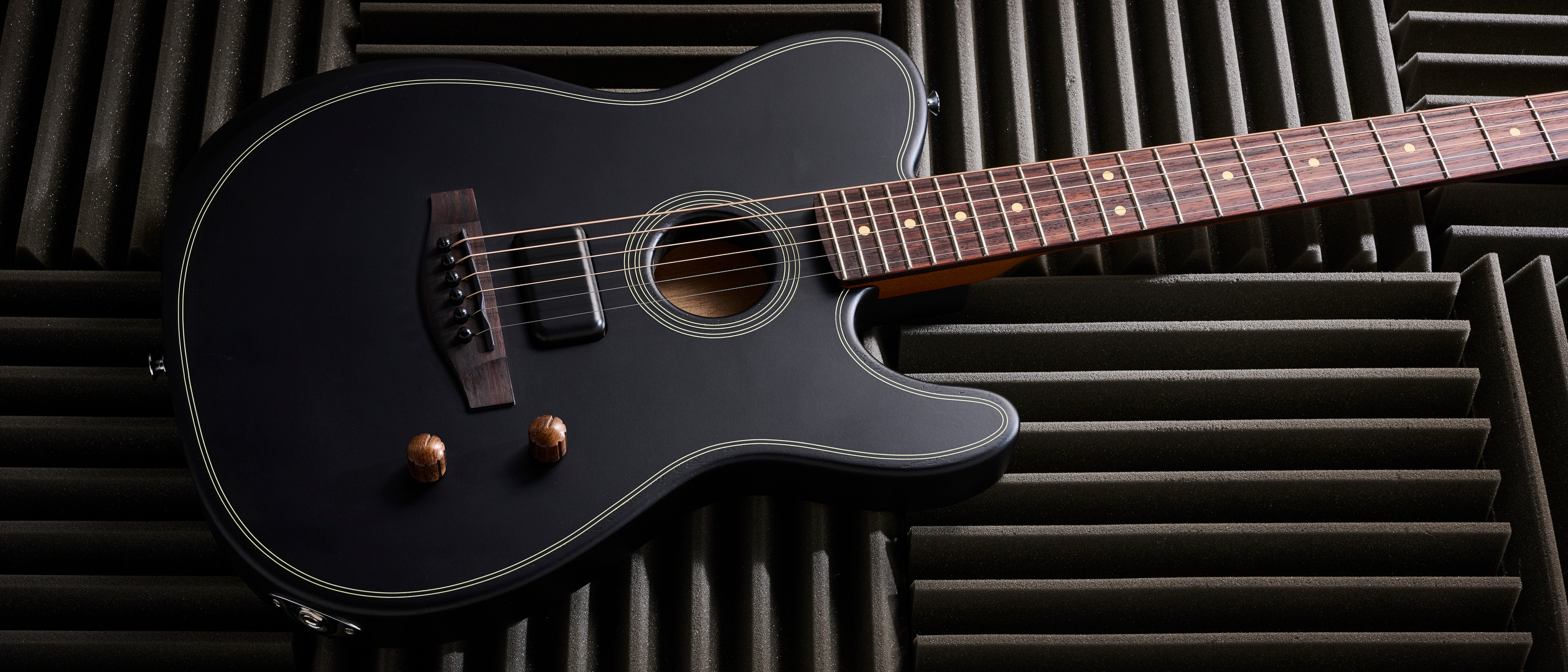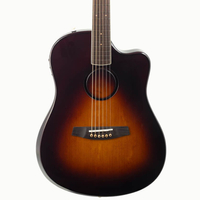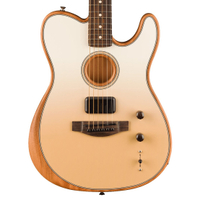Guitar World Verdict
This may be the most affordable Fender's Acoustasonics will get, and the good news is it holds its own. Streamlined, yes, but the core hybrid experience and appeal is very much here.
Pros
- +
A compelling home and stage guitar design at a far more affordable price.
- +
Excellent neck and a build that doesn't feel like too much of a trade-off.
- +
The Fishman transducer piezo sounds better here than some similarly priced electros I've tried.
Cons
- -
The inevitable choice between guitar amp and PA still means still means some of the sound can be compromised.
- -
I'd like to see a detent on the Blend control at 50% for easier reference.
- -
Black finish shows marks very easily.
You can trust Guitar World
What is it?
Fender's Acoustasonics have been around long enough for the message to be clear; these guitars are not the best of both worlds. But they are a unique meeting of them that blurs some lines between electric and acoustic guitar sounds. It won't ever replace your Tele or Taylor, but for some players it'll be a more practical performance solution and unlock different kinds of inspiration at home. But it was always for a price some of us were simply unwilling to pay.
Fender CEO Andy Mooney suggested a change was coming to me as far back as 2022 and my initial assumption was that this meant a more affordable Southeast Asian Acoustasonic would be a Squier. Now the Cor-Tek-produced Standard series has proved that is not the case, and of all the talking points that series is bringing with it, the $599 Acoustaonic Tele and Jazzmaster are the most notable.

The Standard treatment means Acoustasonics are suddenly $600 more affordable than the next (Player) model – that's a quantum leap in guitar market terms that opens it as an option to many more players. And with a price cut something has got to give – or more, some things.
I've played nearly every main iteration of the Fender Acoustasonics so far, from the Ensenada-made Players to the California-constructed American series and even the Finneas signature model; I've reviewed many of them. Now I'm here to find out what features the more affordable Standard Acoustasonic Telecaster jettisons compared to the Player and American models that came before, and what it can offer players in its own right.
Specs
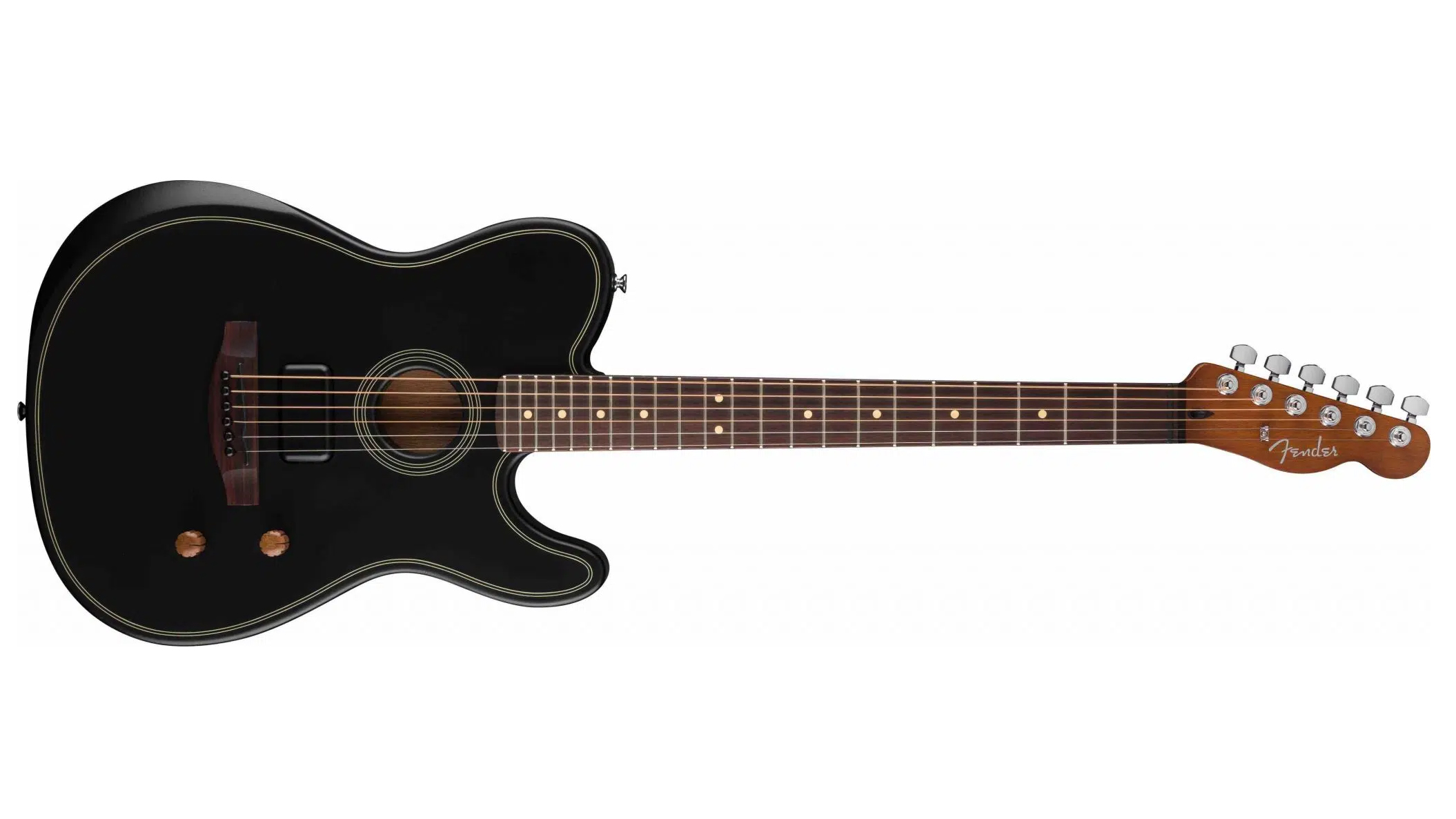
- Launch price: $599/£549/€649
- Made: Indonesia
- Type: Six-string hybrid acoustic-electric guitar
- Body: Nytoh with solid Sitka spruce top
- Neck: Nyatoh, Modern Deep C
- Fingerboard: Rosewood, 12" radius
- Scale length: 25.5"/647mm
- Nut/width: Graph Tech TUSQ / 42.86mm
- Frets: 22, medium jubo
- Hardware: Standard standard cast with Hex buttons, roswood bridge, black plastic bridge pins,
- Electrics: Fender Acoustasonic Shawbucker humbucker; Fishman under-saddle transducer
- Controls: Master volume, Blend
- Weight of test model: 4.13lb/1.87kg
- Left-handed options: No
- Finishes: Black (as reviewed), Aged Natural, Honey Burst
- Cases: Not included
- Contact: Fender
Build quality
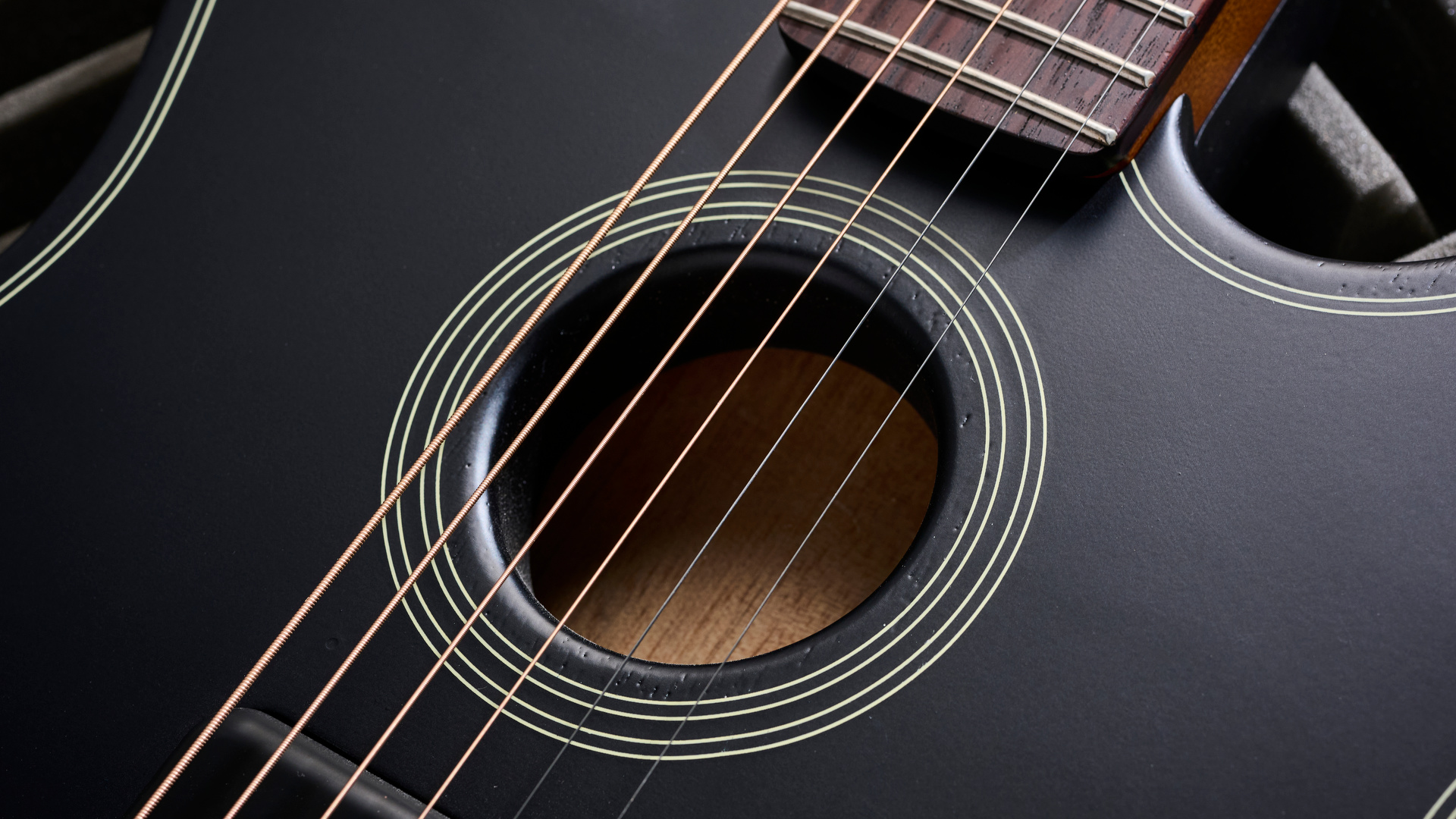
Build quality rating: ★★★★☆
The Black option of the Standard doesn't feature the inlaid printed top onto solid spruce with natural wood forearm contour, mahogany back and sides of previous models. Instead goes for a fully-finished nyatoh body with solid Sitka spruce top.
In black satin here it's ultra sleek to behold and some may well prefer the lack of contrast between top and sides. And they can have that with the Aged Natural and Honeyburst finishes.
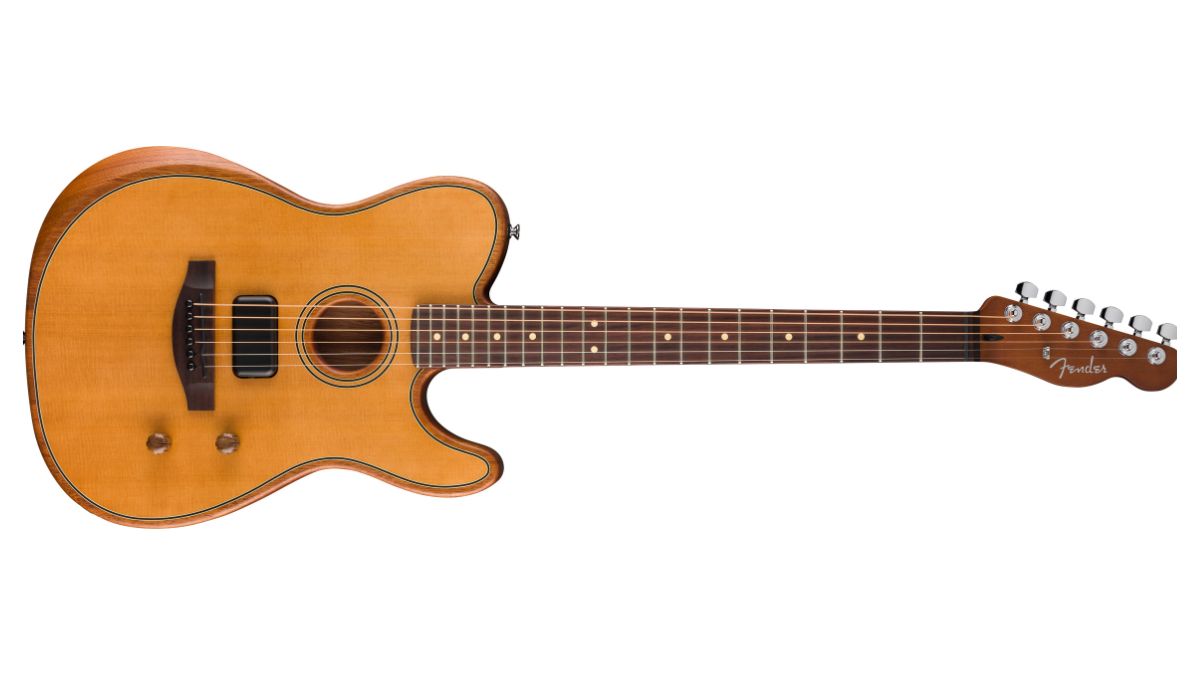
The grain of the nyotoh is visible through the Black finish on the back and sides, plus around the soundhole, but not on the top. I prefer the grain and find the black satin top finish is a magnet for fingerprints and marks. Such is the price for black finishes of this kind, and I'd be extra careful as marks will show up readily from rubs onto other surfaces. Still, I'd expect a lot fewer problems of this nature with the Aged Natural and Honeyburst finish options.
The neck grain is less pronounced than my previous Acoustastonic experiences too – less tangiably… woody, but still smooth and very much inviting. Indeed, the feel here is appealing thanks to a build that doesn't feel like a poor relation. More a smoother one.
Acoustasonic necks are a huge part of the appeal; Cor-Tek has done us proud here with rolled edges (like the electric Standard Telecaster, Fender isn't saying they're rolled but they feel it) and a reassuringly dark rosewood fretboard (and bridge). Fender could have gone for laurel like the Standard electric guitar range here and most wouldn't have been surprised, so I'm pleased they went for the higher spec.
The action is lower than some Acoustastonics I've played but still higher than I know these guitars can comfortably go. I know this because I've tweaked the Micro-Tilt on Acoustasonics before – a wonderful kind of adjustable shim design from Fender's 'eventful' '70s years that allows you to fine-tune the neck angle. Such is my vocal enthusiasm for this feature that my colleagues now premptively roll their eyes whenever I merely say the words 'micro' and 'tilt near them'.
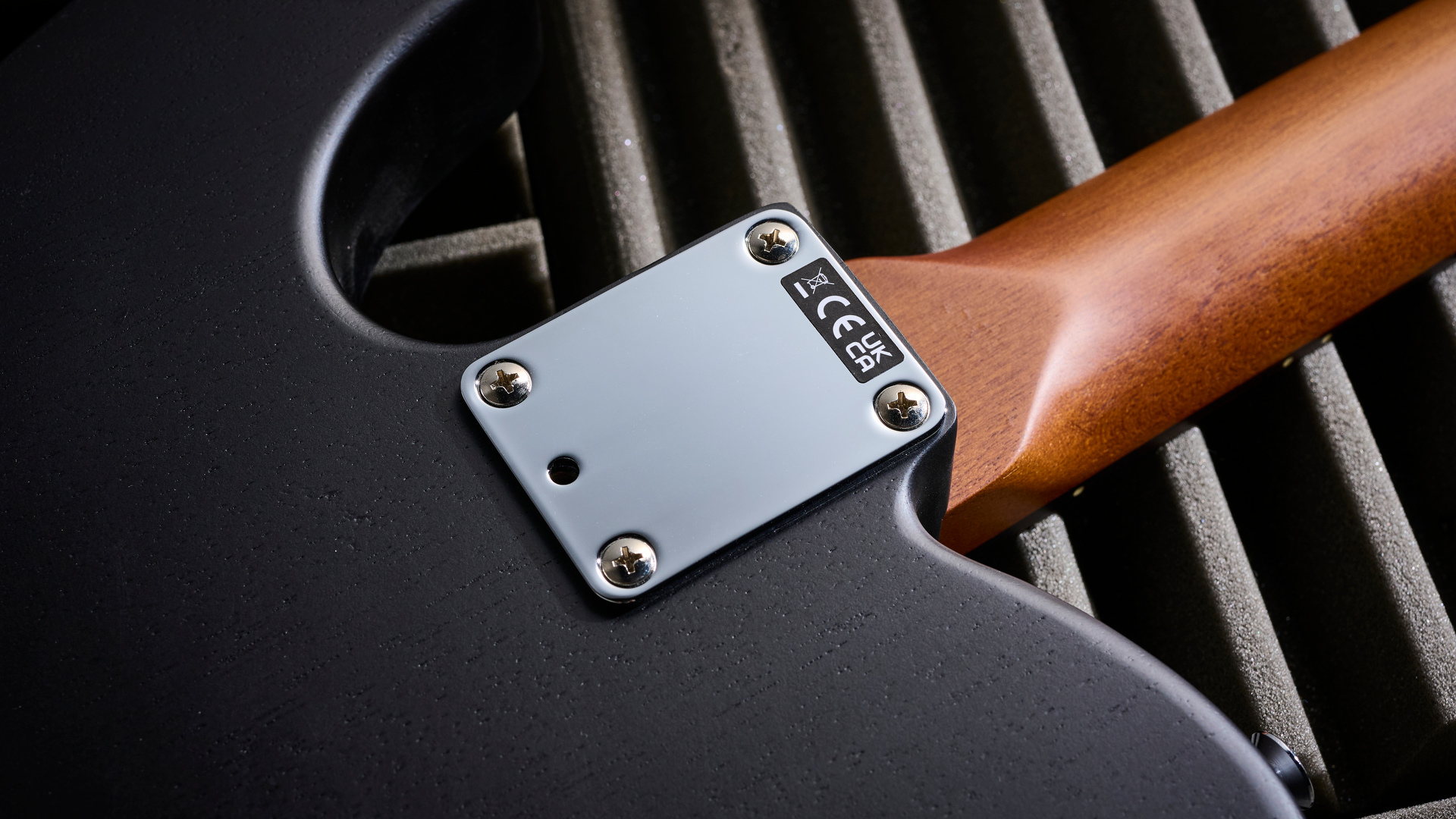
With no adjustable bridge here it's doubly important. While there's a little leeway in personal preferences with truss rod changes for neck relief, the Micro-Tilt allows you the only other means of action change beyond a different string gauge (this comes with gauge 11 Fender acoustic strings.. You just need to loosen the two bolts either side of the Micro-Tilt hole before any hex key adjustments are made.
Another returning feature from the Player models is the 9-volt battery – accessed via a small door on the rear of the body. The American Series USB charging has its drawbacks - you can't change a rechargeable internal battery over in a gig situation. But moreover here, with no digital processing on these Standard models you should be getting far more than the approximate battery life of 20 hours the Player series could deliver.
How much? Fender isn't shouting about it, but we asked for confirmation from the company and it's up to 65 hours – now that's a significant jump, illustrating just how power-hungry the DSP of the Player series 'Acoustic Engine' is.
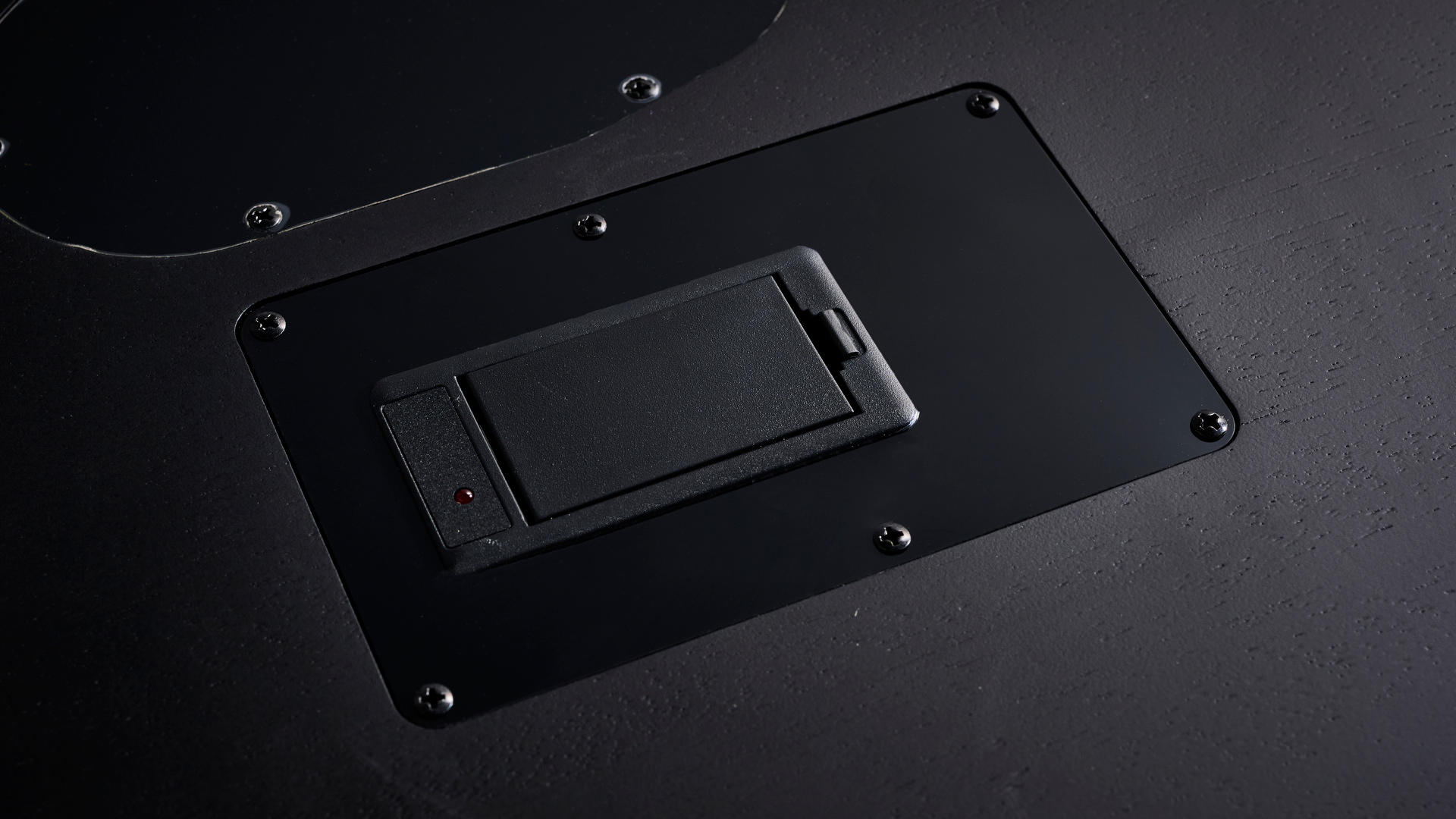
Playability
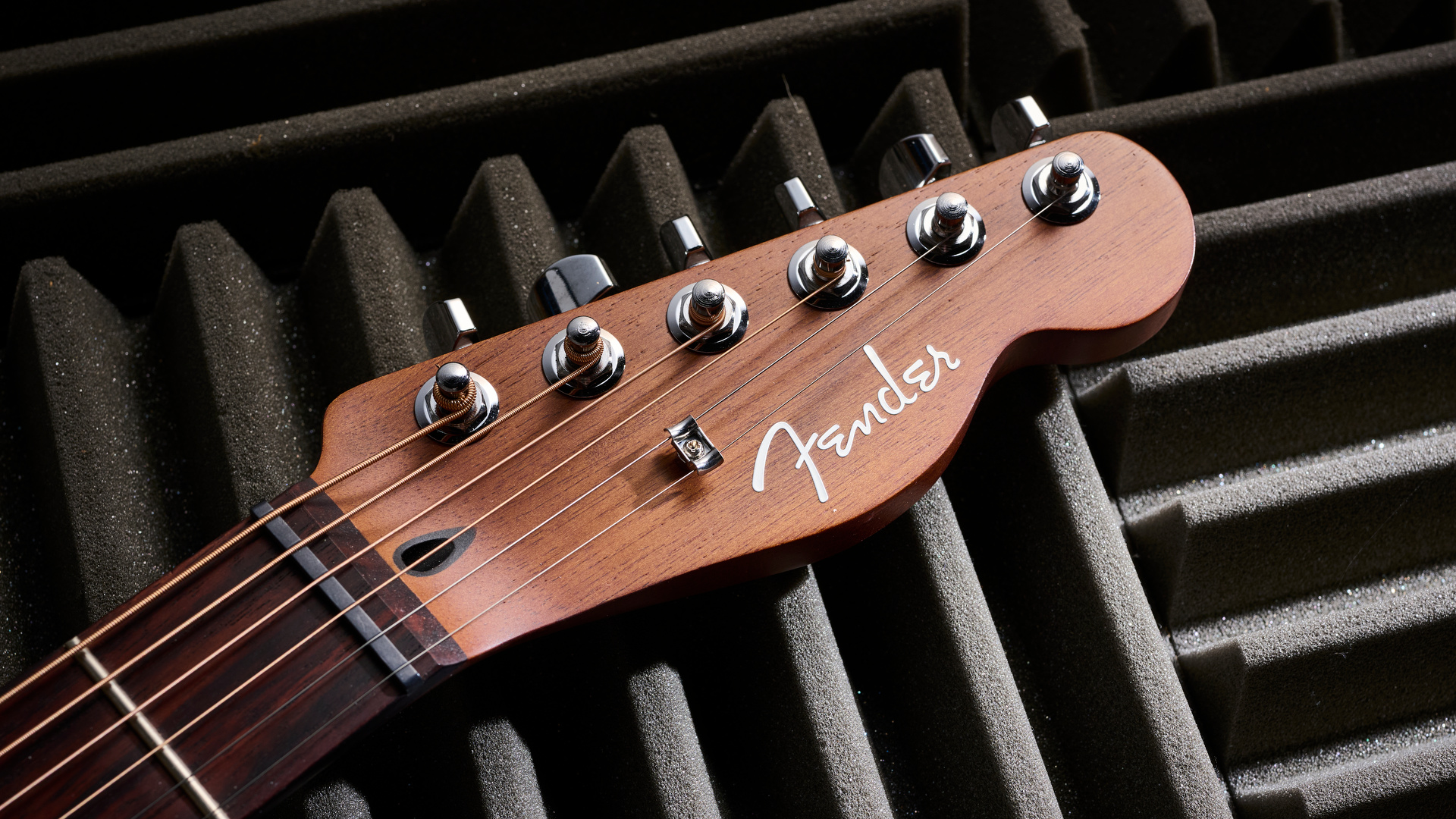
Playability rating: ★★★★★
The low-medium action out of the box will suit many but I can't resist tweaking the Micro-Tilt adjustment to get things a little lower
As I've already alluded, this guitar provides a really positive playing experience. And I think that's very much the case whether you're coming from electric or acoustic guitar to this model. The satin urethane finish of the nyatoh neck is silkier than the grainier Player and American models' mahogany. It's different, not inferior. Both feel great combined with the 12" radius rosewood fingerboard.
The low-medium action out of the box will suit many but I can't resist tweaking the Micro-Tilt adjustment to get things a little lower, and compensating with the neck relief after. It pays off again. The novelty of being able to do faster runs comfortably with low action on an 'acoustic' guitar will never get old for me, and I wager I won't be alone. And Fender may call the neck carve 'Modern Deep C' but it's not that much deeper than the C-shape Fender necks I've grown up with.
Sounds
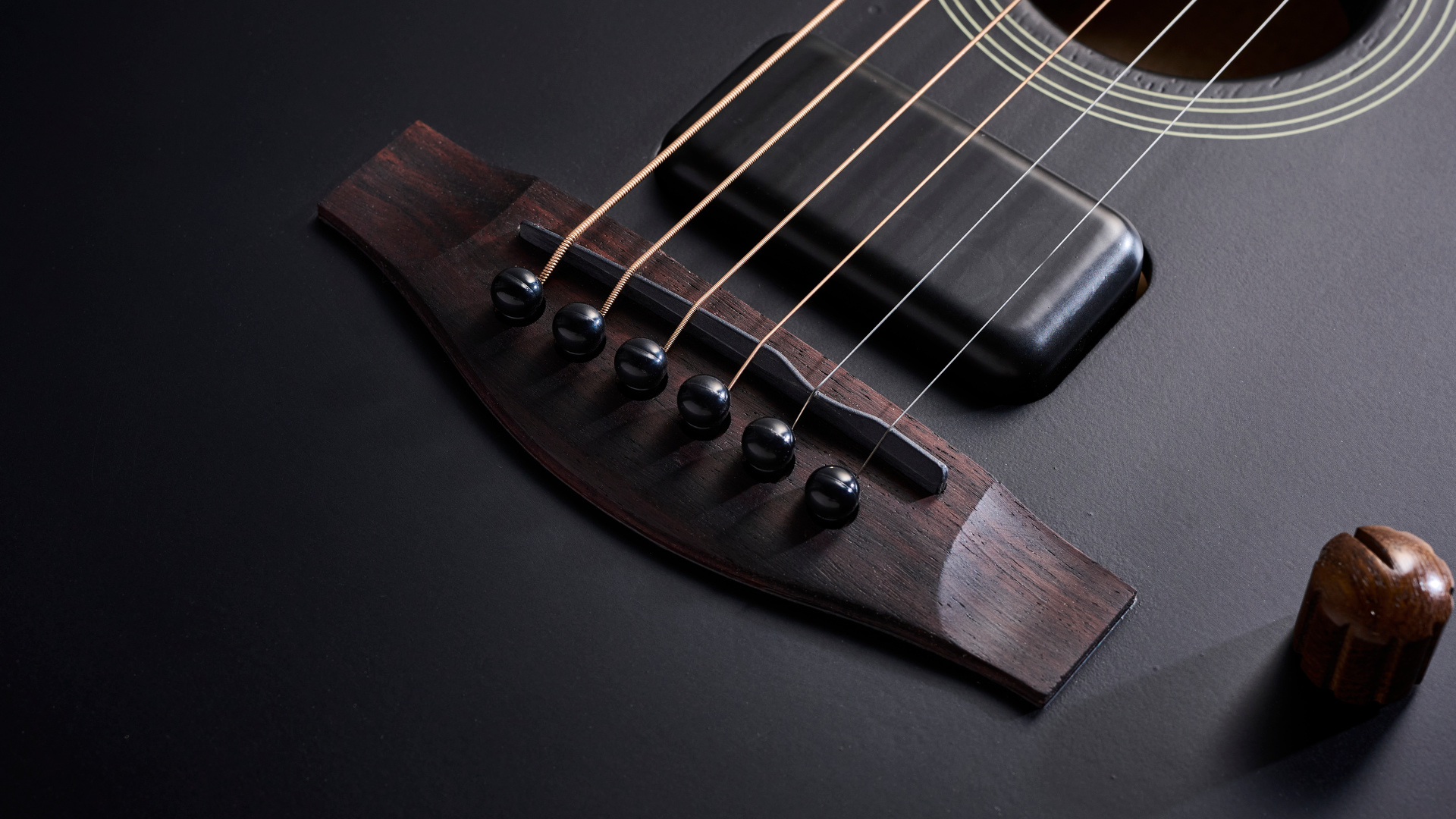
Sounds rating: ★★★★☆
I can't imagine anyone is buying this guitar to only play it unplugged but after trying a few Player and American Acoustasonic Telecasters in recent years, I think this test Standard model has the least projection of any I've spent time with. Now that's not to say any are approaching even parlour guitar output, and the Jazzmasters still seem to be the best for a fuller unplugged sound, but this test guitar sounds slightly quieter than the Player Tele examples I've strummed. But, some context is required.
While my experience suggests the mahogany back, sides and neck contribute to a better unplugged sound, the Stringed Instrument Resonance System (SIRS) that acts as a soundhole here certainly plays its part in delivering an unplugged response that's still beyond what I'd expect from the dimensions of this guitar's body. And it's still fine for playing around the house… or wherever else you want to play. Like the Acoustasonics before, this is still a great candidate for a great couch guitar, except this time it doesn't cost north of $1,000.
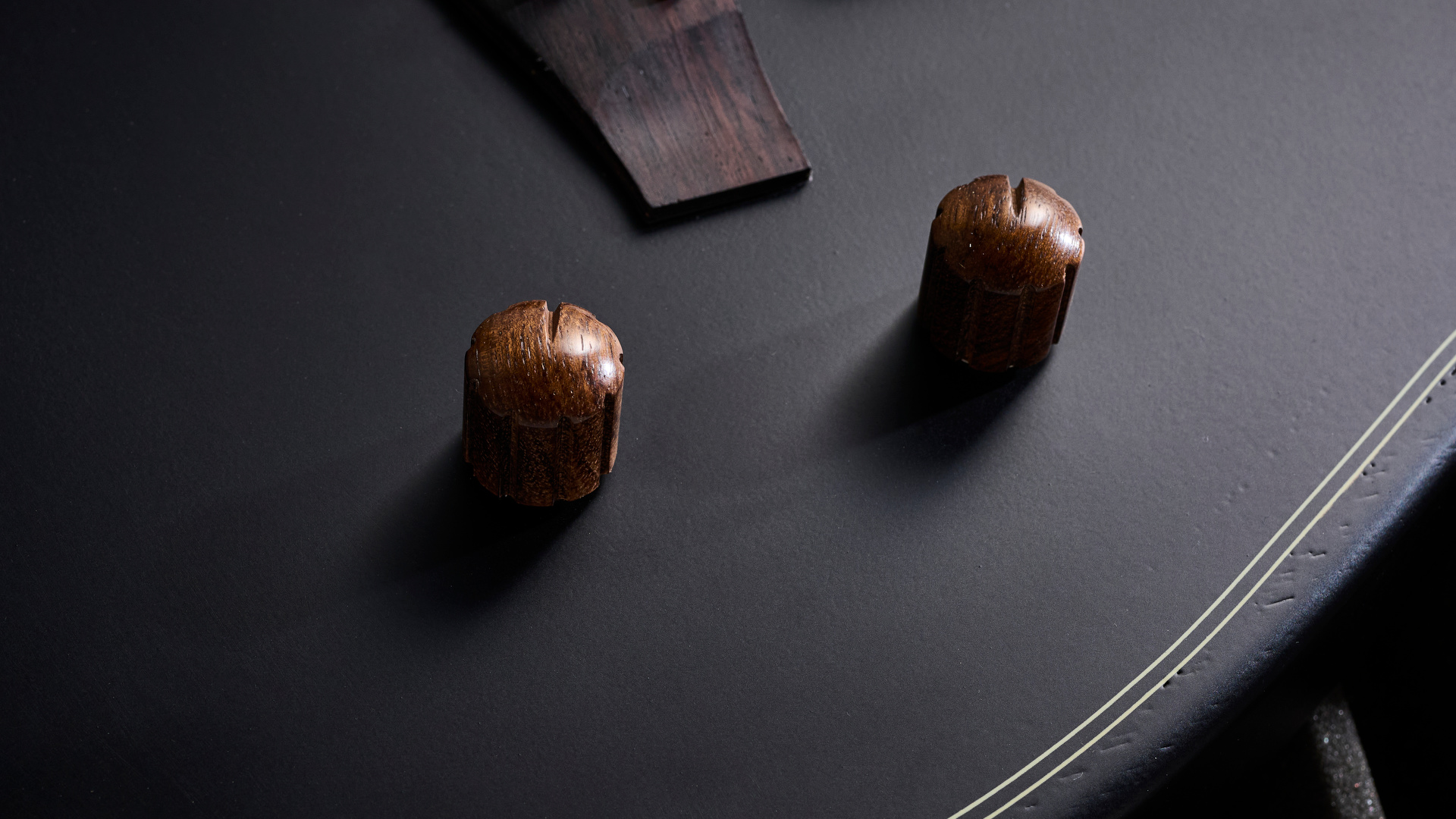
The Standard Acoustastonic really pairs things down on the options side – but the result isn't the sparcity I was fearing
Plugged in is where the Standard's proposition can really be tested. Fender has stripped back the price – but has it gone too far here paring back the sounds too? My quest to answer that hones in on a central conundrum I've found with all Acoustastonic guitars to date – do they sound better through a PA/acoustic amp or an electric guitar amp? Well, perhaps there's another way.
We'll get to that. Rest assured the Standard Acoustastonic really pairs things down on the options side – but the result isn't the sparcity I was fearing. It's… focused?
Back in 2019, the American Series guitars felt like a lot to digest at once when we were all still getting our heads around the concept Fender was introducing to us. This is simple – you blend between an undersaddle piezo acoustic pickup, and a Shawbucker humbucking magnetic pickup. The only other control is a volume – something that's kind of redundant beyond me only ever turning it up or off. You won't be controlling gain on the humbucker here.
Two pickups with one control. And it would be great if Fender had brought in a detent to tell the player when the Blend control is at halfway, as it is, you're really judging by ear when some indicator would be useful as a landmark on a pot that should get a lot of action when you play plugged in. In addition, a separate tone control is probably asking too much, given the lack of one on any previous iteration.
With none of Fishman's 'imaging' that allows for the piezo signal to be mixed with IRs of specific acoustic shapes being mc'd, a lot is resting on the undersaddle piezo here. It does a fine job – with more low end than you might imagine. While there's no substitute for the physically of a 'real' acoustic guitar – and I A/B with my own Fishman Sonitone-equipped Sigma Dreadnought and Baggs M1A-equipped Auden Julia – the Standard Acoustasonic sounds beyond its comparatively diminutive dimensions.
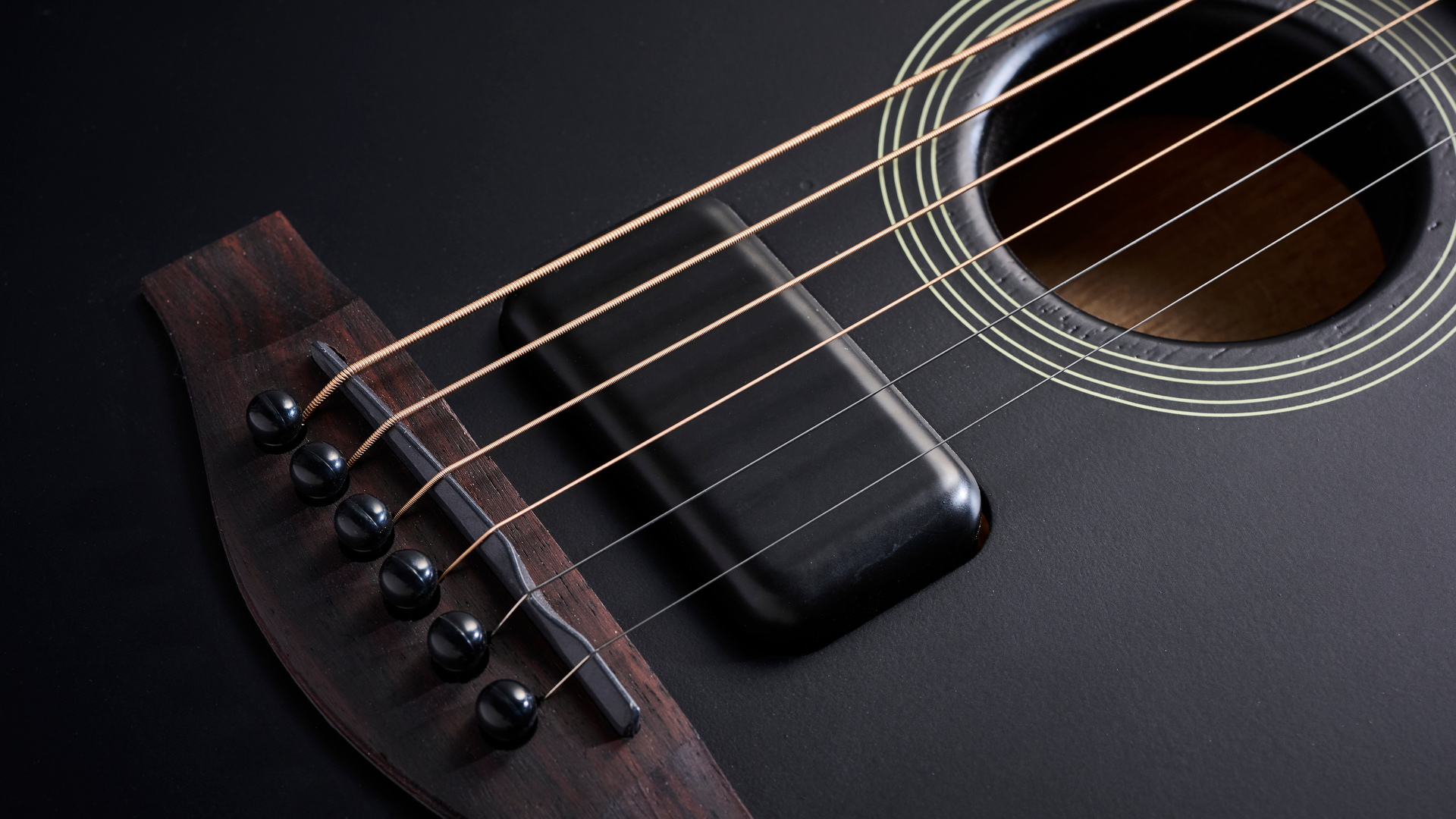
As I try it through a Line 6 Powercab and the Headrush FRFR Go cab I recently reviewed before I have to send it back, there's no place for this piezo to hide – no reverb, completely flat EQ. I'm pleased by the lack of compression quack and low-end definition. But there's also no denying it sounds significantly better this way than through a guitar amp, while the Shawbucker here suffers from a low end drop as I turn the Blend knob.
Its chime and bass thump returns when I plug into my Supro Delta King 12 tube amp, while the piezo loses its hi-fi depth. None of this will be surprising at all to players; it has always been this way for acoustic and electric guitar pickups. But as I blend between the extremes to explore the spaces in between, the ideal amp is less certain. Throw in some light tremolo for movement on chords and it's a pretty unusual sound in my usual world – darker than my soundhole-pickup acoustic in a pleasing way, going further towards the Shawbucker for leads and arpeggios. But should players have to choose between the best way to amp this guitar?
I think Acoustastonics really lend themselves to use with pedals more than traditional acoustic guitars – they're certainly more feedback-resistant
Not necessarily. I think Acoustastonics really lend themselves to use with pedals more than traditional acoustic guitars – they're certainly more feedback-resistant. A clean boost can help with the low-end drop-off for the Acoustasonic Shawbucker through the PA, but a multi-model amp modeller like a Helix, Quad Cortex or Tonex could allow an instant switch between an acoustic premp or tube amp emulation to suit your needs at the time.
Anyone expecting the Shawbucker to be able to switch up to heavier rock rhythm tones will be disappointed, but that's always been the case with the magnetic pickups on these guitars. Instead, think of it as a hybrid acoustic voice. And I think the blend for singer-songwriters and supplementary guitarists in cover bands is a really useful asset.
Verdict
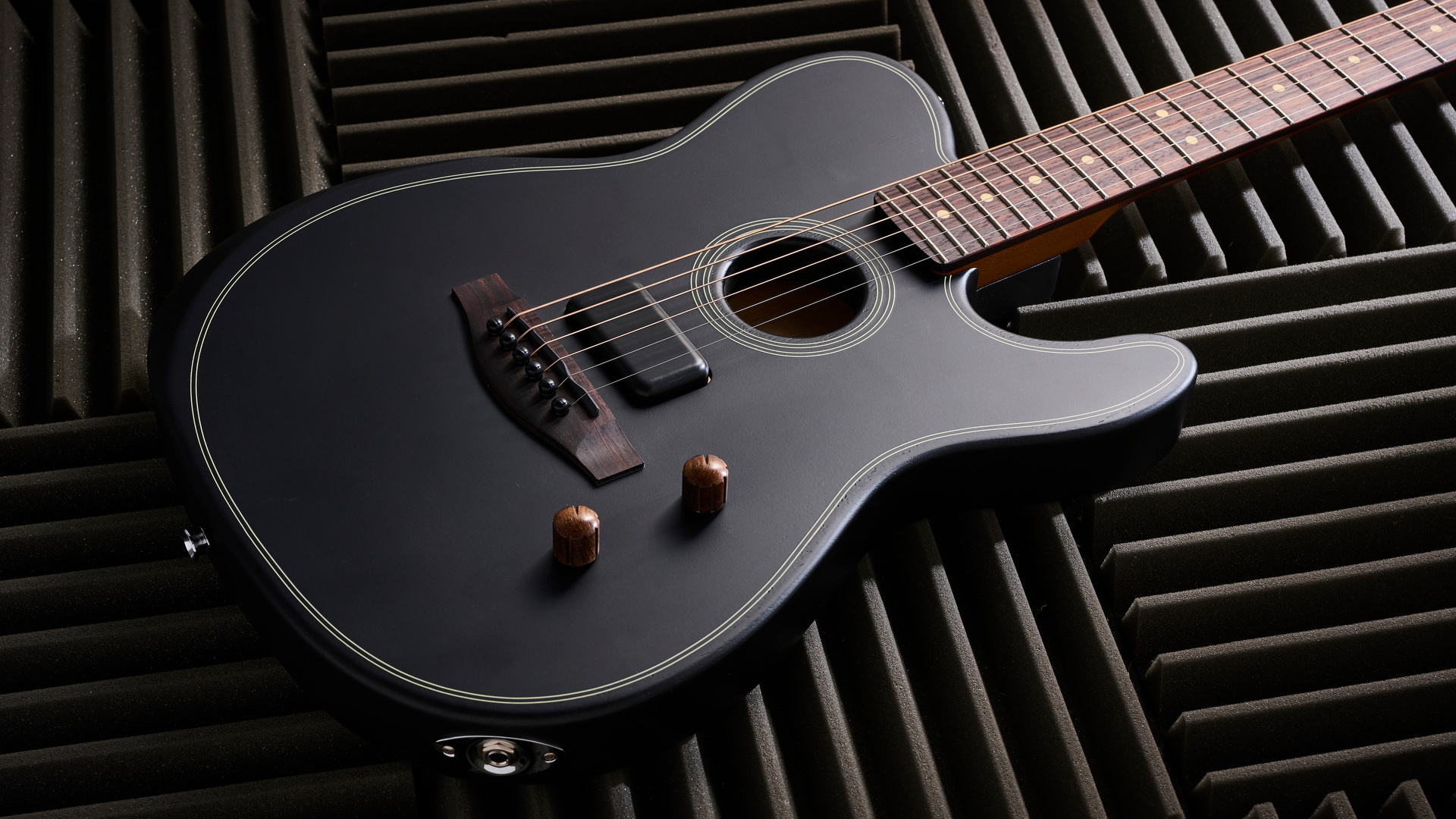
I think looking at the Acoustasonic Standard as an acoustic guitar with more scope is the best way to avoid disappointment
A musician friend of mine recently told me how they'd noticed more and more players using Acoustasonics for local pub gigs. I expect that to increase now. And I'm not so sure it'll only be younger players adopting this more affordable version either; the appeal of hybrid playability and sound isn't tied to a generation. And while there will be expectations and open-mindedness in the mix here when it comes to who this guitar may appeal to, it really doesn't sound like a Telecaster.
I think looking at the Acoustasonic Standard as an acoustic guitar with more scope is the best way to avoid disappointment. And I will say the same for all the Acoustasonic models released so far. What it doesn't offer in onboard EQ control or twang it can deliver with upper fret access and the means to blend in a magnetic pickup to complement as required. It's a middle way rather than a Swiss Army guitar. Something that may inspire players to explore effects more than they may have considered before with a more traditional acoustic guitar.
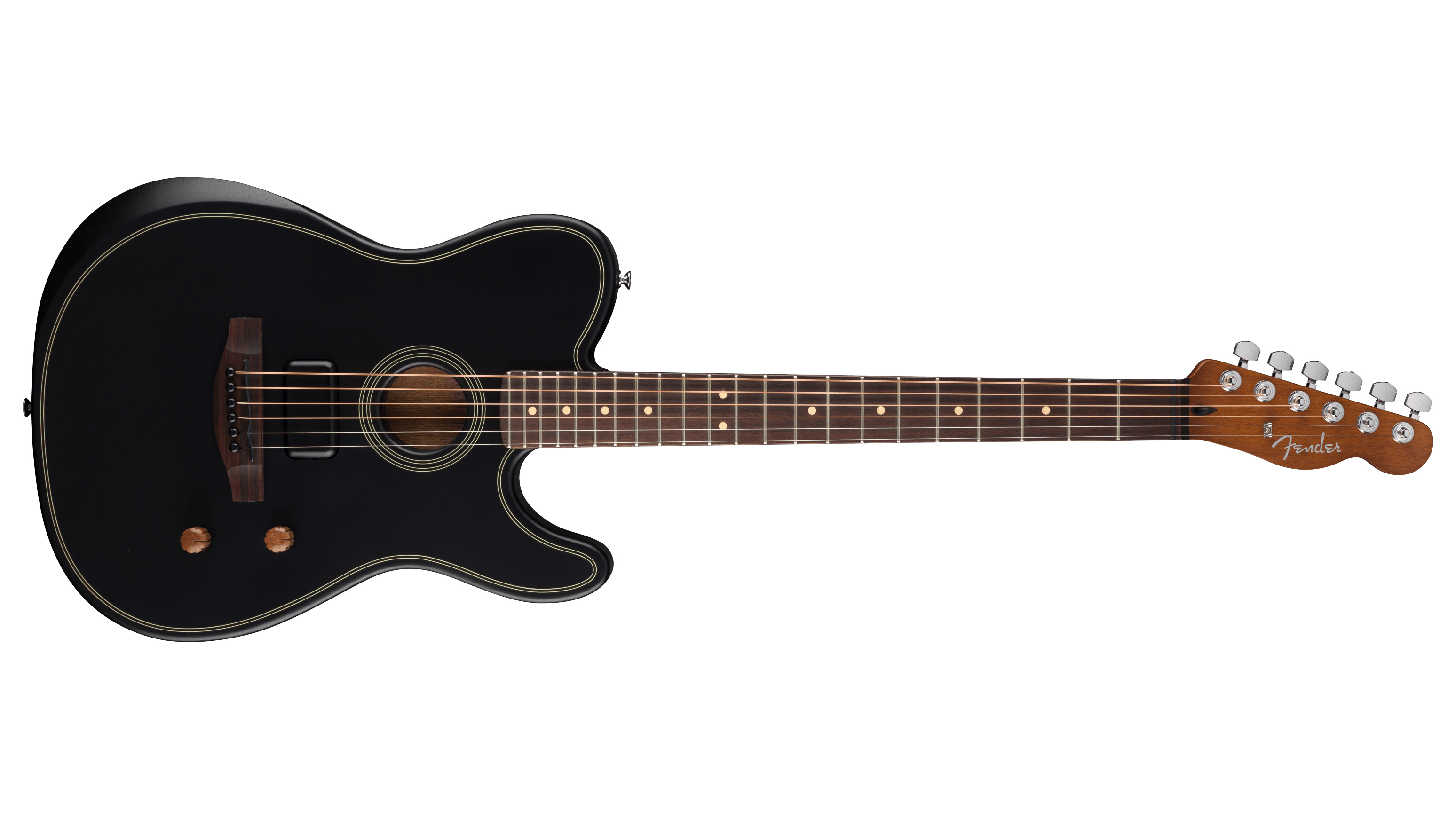
The form factor here is a bigger deal than perhaps I've given it credit for in the past – for players who need an acoustic sound in a band, and may rarely touch the blend control, the Acoustasonic Standard still provides a very accessible form factor that could be great for singers who don't want the phyiscal depth of a more traditional parlor, concert or dreadnought shape. The Fender Highway Series has already approached this in its own way, but is higher in price, and doesn't offer the same enhanced upper fret access.
This feels and plays very much like the Acoustasonics I've enjoyed in the past and I'm glad more people will be able to sample that
The real cause for celebration here is the price. This and the Jazzmaster are by far the most significant Fender Standard models as they represent a $600 lower threshold for players compared to the next option; the Player Acoustasonic.
This feels and plays very much like the Acoustasonics I've enjoyed in the past and I'm glad more people will be able to sample that. There's nothing directly comparable in terms of quality and combination in this price range either.
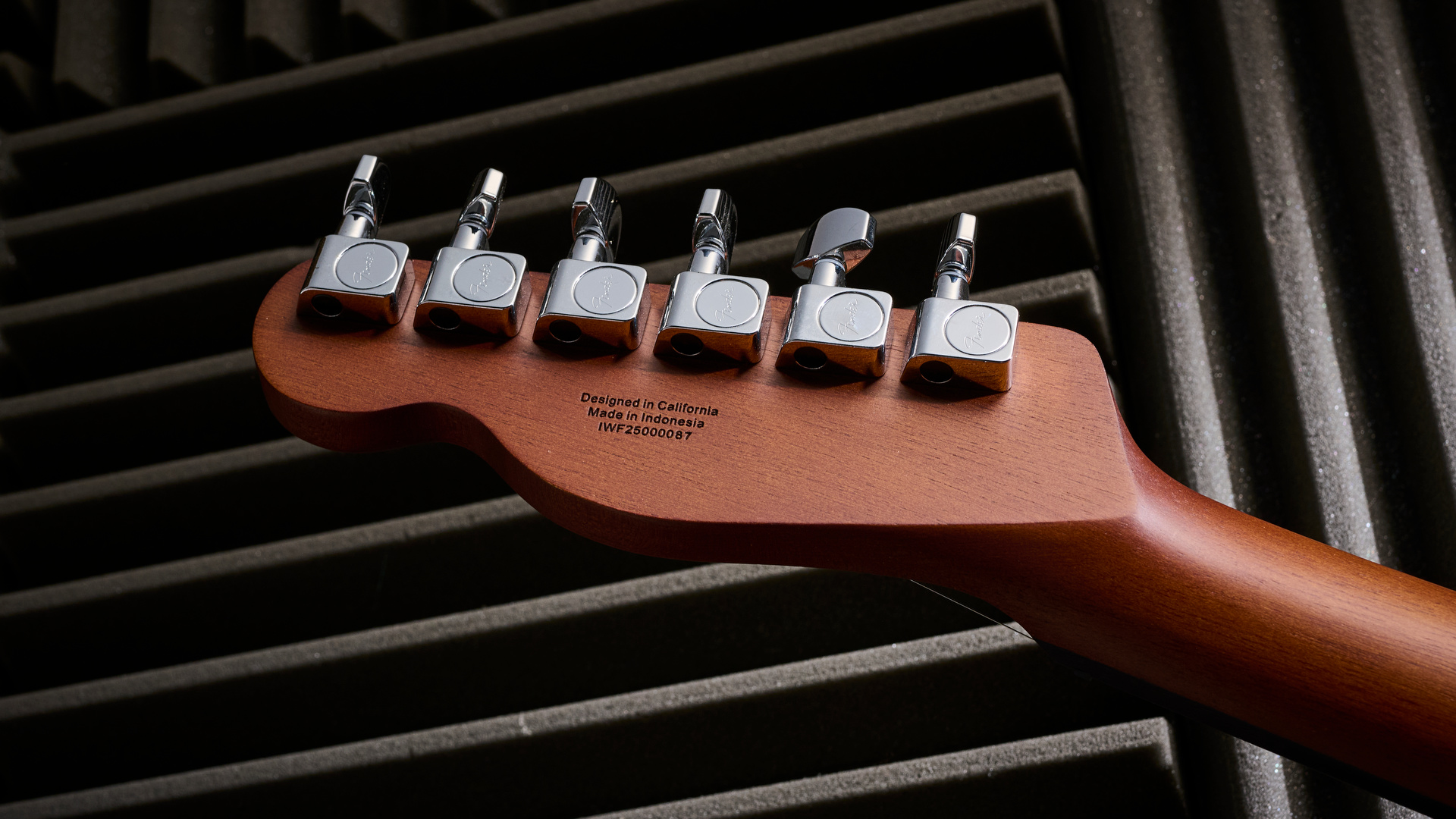
So let's take stock. You lose the Fender nice soft case of the Player, the Fishman 'imaging' and overdriven voices and arguably, based on my experience, a better uplugged performance. But honestly, I don't feel that adds up to $600. Perhaps it will for others. But I would choose these Standard models over the Player options if I were new to the Acoustasonics. And they make fantastic house guitars too.
Guitar World verdict: This may be the most affordable Fender's Acoustasonics will get, and the good news is it holds its own. Streamlined, yes, but the core hybrid experience and appeal is very much here.
Test | Results | Score |
|---|---|---|
Build quality | The Black finish marks easily on the top but no complaints elsewhere. | ★★★★½ |
Playability | Another excellent Acoustasonic neck and the Micro-Tilt feature allows you to fine tune the action further. | ★★★★★ |
Sounds | The trade-off may often come with how you choose to amplify this guitar, but there are solutions. | ★★★★☆ |
Overall | Not a diminishing return, but a focussed and highly playable representation of the Acoustasonic at a much more affordable price. | ★★★★½ |
Also try
LR Baggs AEG-1 - $1,599/£2,015
A genuine step forward in electro-acoustic sound, with a thinner body and excellent playability. But the price, for UK and Europe customers especially, is less accessible.
Read more: LR Baggs AEG-1 review
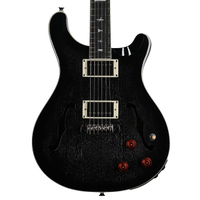
PRS SE Hollowbody Standard Piezo - $1,529/£1,035
Opeth's Mikael Åkerfeldt and Fredrik Åkesson are amongst the players who rely on LR Bagg's piezo-equipped PRS saddles for acoustic tones, and they deliver along with full-bore humbucker tones here.
Fender FINNEAS Acoustasonic Player Telecaster - $1,400/£1,199/€1,399
With an appealing onboard chorus alongside a variety of useful acoustic tones, this has been my favourite Acoustastonc to date for sounds, but the price difference between it and the Standard is sobering.
Read more: Fender FINNEAS Acoustasonic Player Telecaster review

Rob has 20 years of experience writing, reviewing and editing for guitar magazines and websites, including Guitarist and Total Guitar. He's now the Reviews Editor for GuitarWorld.com and MusicRadar guitars, heading up our in-house reviews team to give you in-depth and honest tests of the latest guitar gear. He eats and dreams reviews.
You must confirm your public display name before commenting
Please logout and then login again, you will then be prompted to enter your display name.
